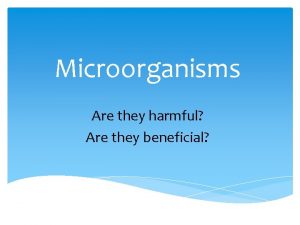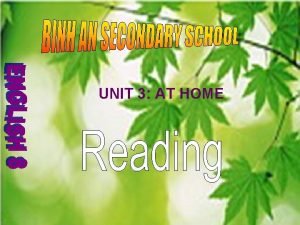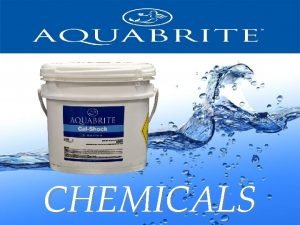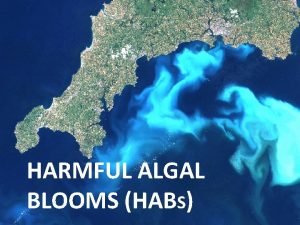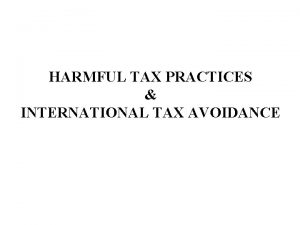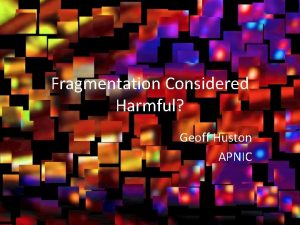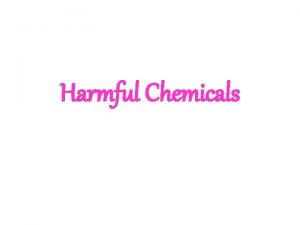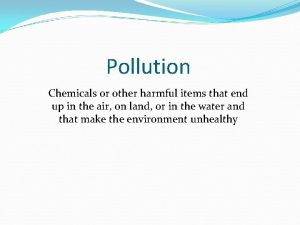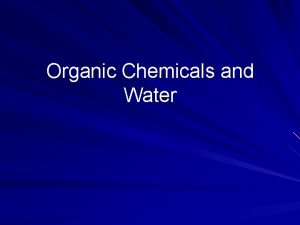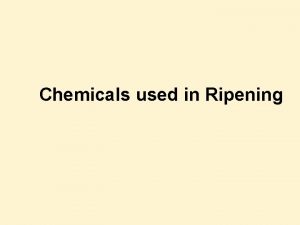Chapter One Harmful and useful chemicals in the
















- Slides: 16

Chapter One: Harmful and useful chemicals in the environment Section 1. 1 p. 182 -190

1. 1 Chemicals in the Environment � Everything contains chemicals: environment and living things � Oxygen: animals need oxygen in order to survive. Plants make oxygen. � Carbon Dioxide: plants need carbon dioxide to survive. Animals make carbon dioxide.

Harmful Chemicals � Forest fires and volcanoes- release carbon dioxide (too much? ) � Gasoline, electricity and pesticides- produce toxins that affect our environment (how? )

Nitrogen Cycle � Nitrogen cycle: what do you think it might mean? � Nitrogen cycle is a cycle that involves the use and deposition of nitrogen in the earth. Like recycling. � Nitrogen fixation- process in which nitrogen is “fixed” so it can be used � Fixed = combine with other elements.


What happens during nitrogen fixation? � Free nitrogen (N 2) is absorbed into the ground where bacteria, in root nodules, will separate N 2 so that it can combine with other elements. � Lightning does this also

Nitrogen Cycle Steps: 1. 2. 3. 4. 5. Nitrogen fixation Plants use product of nitrogen fixation Animals eat plants- animals make more complex nitrogen compounds (proteins) Decomposers- break down complex N. C. making simpler N. C. in the soil. Bacteria- break down simpler N. C. into free nitrogen which is released back into the air

Concentration of Nitrogen � Varies from place to place � Some nitrogen is not available because it is found very deep in the soil so that plants and animals cannot reach it. � Nitrogen is needed by plants; therefore, fertilizers are added or clover and alfalfa to fix more nitrogen � Video

Pollution � Definition- any change in the environment that produces a condition that is harmful to living things. ◦ Examples: �Car exhaust �Forest Fires �Anything else?

Agriculture Activities � Fertilizers- substance that enriches the soil…makes plants grow better. ◦ Contain: N, P, K (and sometimes S) ◦ Numbers just shown on bag mean the percent found in the fertilizer. �Example: 15, 20, 25 �Meaning 15% N, 15% P, 20% K, 25% S ◦ Fertilizers can be harmful and must be applied carefully

Agriculture Activities con’t � Pesticides- chemicals that kill pests (pest = organisms that harm people, crops, or structures). ◦ Herbicides- kill or control weeds ◦ Insecticides- kill or control insects ◦ Fungicides- kill fungi ◦ Pesticides kill all pests as well, even good ones. . .

Solid Wastes � Garbage (includes everything from machinery to bottle caps) � Some solid wastes can be reused or recycled but most are placed in landfills � Hazardous wastes- incinerated (burn them at very high temperatures) � Sanitary landfills- plastic liners and compact clay to prevent solutions from entering soil

Wastewater � Sewage- dissolved and undissolved materials from kitchen, bathroom, and laundry � Septic tank- underground container where bacteria break down organic materials before moved to the soil � Sewage treatment plant- treats the wastewater and releases the effluent back into the river. � Effluent – Treated wastewater that has been released � Storm Sewers - not all water can be treated; therefore, storm water may be released straight back into the river

Fuel Combustion � Fossil fuels- coal, natural gas, oil formed from dead plants and animals. They are also called hydrocarbons…why? � They also contain S, N, O, Hg, Pb � Combustion Reaction: � Word Equation: Hydrocarbon + oxygen carbon dioxide + water + energy � Sometimes, SO 2, NO, Hg, Pb are let into the environment…. dangerous!

Industrial Processes � Read � “sour p. 190 gas” – natural gas that contains hydrogen sulfide

C & R p. 190 �Numbers ◦ 1, 3 -7
 Specialty chemicals vs commodity chemicals
Specialty chemicals vs commodity chemicals Useful materials in science
Useful materials in science Useful and harmful microbes
Useful and harmful microbes One face one voice one habit and two persons
One face one voice one habit and two persons Mangalore chemicals and fertilizers parent organizations
Mangalore chemicals and fertilizers parent organizations Unit 3 house and home
Unit 3 house and home светр
светр One god one empire one emperor
One god one empire one emperor One one one little puppy run
One one one little puppy run One king one law one faith
One king one law one faith Byzantine definition
Byzantine definition One ford plan
One ford plan See one do one teach one
See one do one teach one One price policy
One price policy Studiendekanat uni bonn
Studiendekanat uni bonn Asean tourism strategic plan
Asean tourism strategic plan Asean one vision one identity one community
Asean one vision one identity one community


